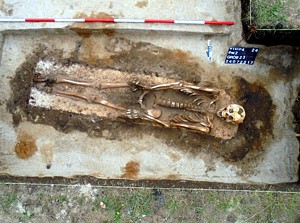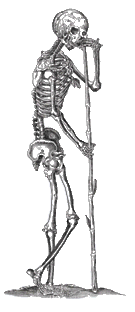




Vanished towns and villages of the Zielonka Forest
The Zielonka Forest is an extensive, wooded natural reserve located 30 km (19 miles) north of Poznań. Nowadays sparsely populated and very scenic, the Zielonka Forest has been granted the protection status of a Landscape Park in 1993. However, archaeological evidence shows that between the 14thand 16thcenturies AD this place thrived with numerous villages and even small towns. Established by private knights and gentry for profit, they attracted settlers from far and wide holding a promise of a better life along well-travelled trade routes. After two centuries of development, for unknown reasons, these villages and towns began to progressively depopulate until their ultimate desolation and collapse. Today, traces of these places can be found in historical documents and local folk legends but most of all – in the archaeological record.
In 2014, aerial photographs taken over some sectors of the Zielonka Forest revealed an outline of a medieval town of Dzwonowo with relics of wooden houses concentrated around a rectangular market square. Nearby, a graveyard belonging to a former parish church of St. Michael was located. The photographs also pointed to the medieval manor house of the town’s owners. From the west, north, and south the town was surrounded by a defensive wall which also marked the space of the urban area.

|
| Fig. 1. 13th century village of Dzwonowo (T. Mełnicki) |

|
| Fig. 2. Medieval town of Dzwonowo (T. Mełnicki) |

|
| Fig. 3. Medieval manor house in Dzwonowo (T. Mełnicki) |
Since 2014, several interdisciplinary projects have been carried out in Dzwonowo, including traditional archaeological excavations and geophysical surveys for archaeological imaging and mapping. These efforts enabled the reconstruction of the urban design of this vanished town. North of the market square a set of geophysical anomalies was recognized suggesting the remnants of an earlier rural settlement (Fig. 5B). It is therefore very likely that the town of Dzwonowo was established on the remains of an older, 13th-century village development.
A portion of the churchyard cemetery was also excavated, and the findings indicated that it was in use from the 14thto the 18thcentury (Fig. 5D). Over one hundred individuals were uncovered, providing a sample for bioarchaeological investigations. Among the regular burials were two unusual ones: one coffin filled with building lime, and another with an individual pinned under a big boulder.

|

|
| Fig. 4. Aerial mosaic of the medieval Dzwonowo town area revealing the archaeological cropmarks and the urban layout (geoportal.gov.pl). | Fig. 5. Interpretation of the archaeological cropmarks in the area of medieval Dzwonowo. A – relics of the town; B – an earlier village settlement; C – late medieval manor house; D – late medieval and modern cemetery (geoportal.gov.pl; M. Krzepkowski). |

|

|
|
Fig. 6. Cemetery in Dzwonowo, 16th-17th century (Photo: M. Krzepkowski) |
Fig. 7. Cemetery in Dzwonowo, 16th-17th century (Photo: M. Krzepkowski) |
According to written sources, Dzwonowo was established at the beginning of the 14thcentury by Dobrogost of the Nałęcz noble family, who at the time held the position of the Poznań Province Governor. It is very likely that at its height, Dzwonowo had over 200 residents. In 1316, the town was raided by the March of Brandenburg and then suffered again in 1383, this time from a civil war. After the latter, Dzwonowo never restored its former prosperity. It began to decline in the sixties and seventies of the 15thcentury. At the time, it belonged to the Skocki family. The main reason for the town’s collapse was the establishment of other private towns nearby, which altered the communication routes which previously supported Dzwonowo. At the onset of the 16thcentury, Dzwonowo was a small village of only six houses, which continued to decline and eventually vanished entirely.
